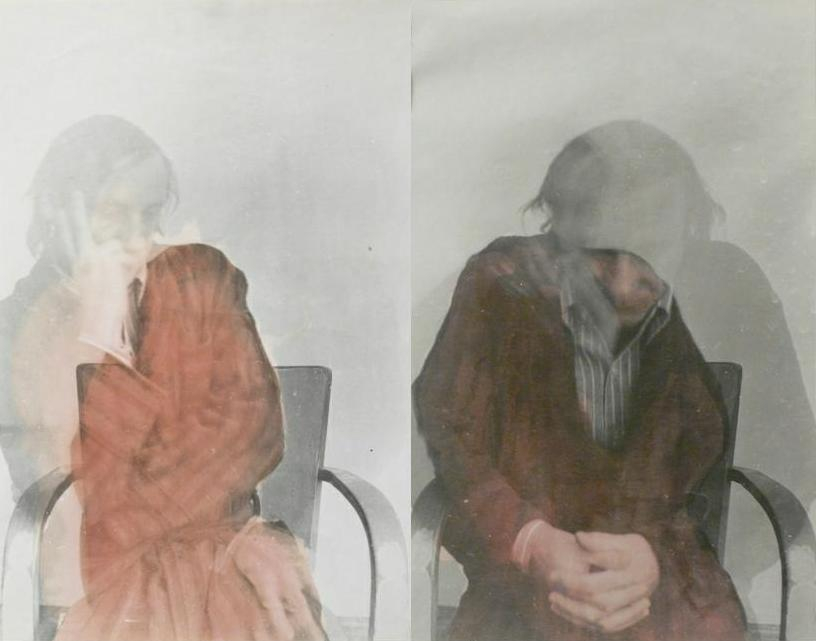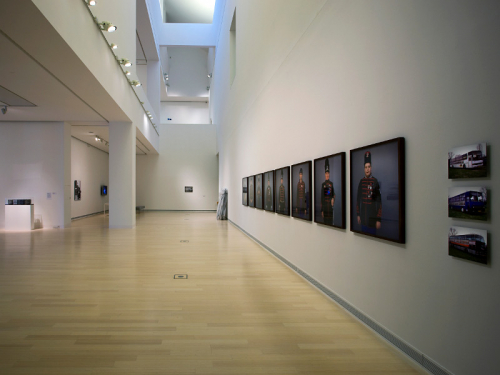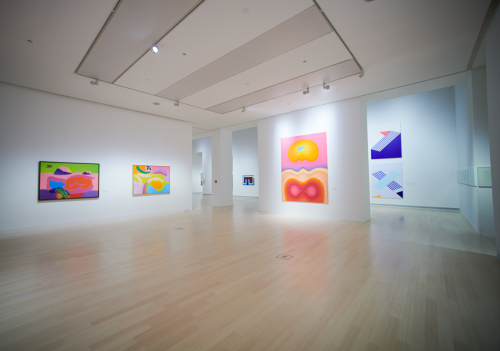Self-portrait is a recurring motif in the photographs of András Baranyay. It has several forms, from rear views through sleeping to photographs exposed onto the portraits of others. As opposed to traditional self-portrait, in Baranyay’s images the figure’s gaze and expression is only very rarely discernible: the model turns his back to the camera or turns his head, resulting in motion blur; other times, the face becomes unidentifiable due to overexposure, multiple exposure or dense hatching. All of these gestures are devices of camouflage and reservedness, expressions of a sensitive personality “lost in details”, according to whom “the development of photography into an expressive device of fine art was less a triumph of modern technology, than a token of intimacy, modesty, and even concealment and disappearance.” (László Beke) Baranyay made a number of self-portraits in this spirit in the mid-70s, among them tiny, 15x13cm “Small framed self-portraits” and “Visit cards”, as well as small self-portraits photographed in a circular mirror, the “sleeping” images and the ones focusing solely on the hands. The two coloured portraits show András Baranyay in his characteristic striped shirt and armchair, familiar from other self-portraits of his. The portrait is yet again rendered airily transparent by the overlapping phases: a kind of “shadowplay” of existence, for the still images are augmented with the dimension of time (and the performance that takes pace in front of the camera). (Krisztina Szipőcs)


